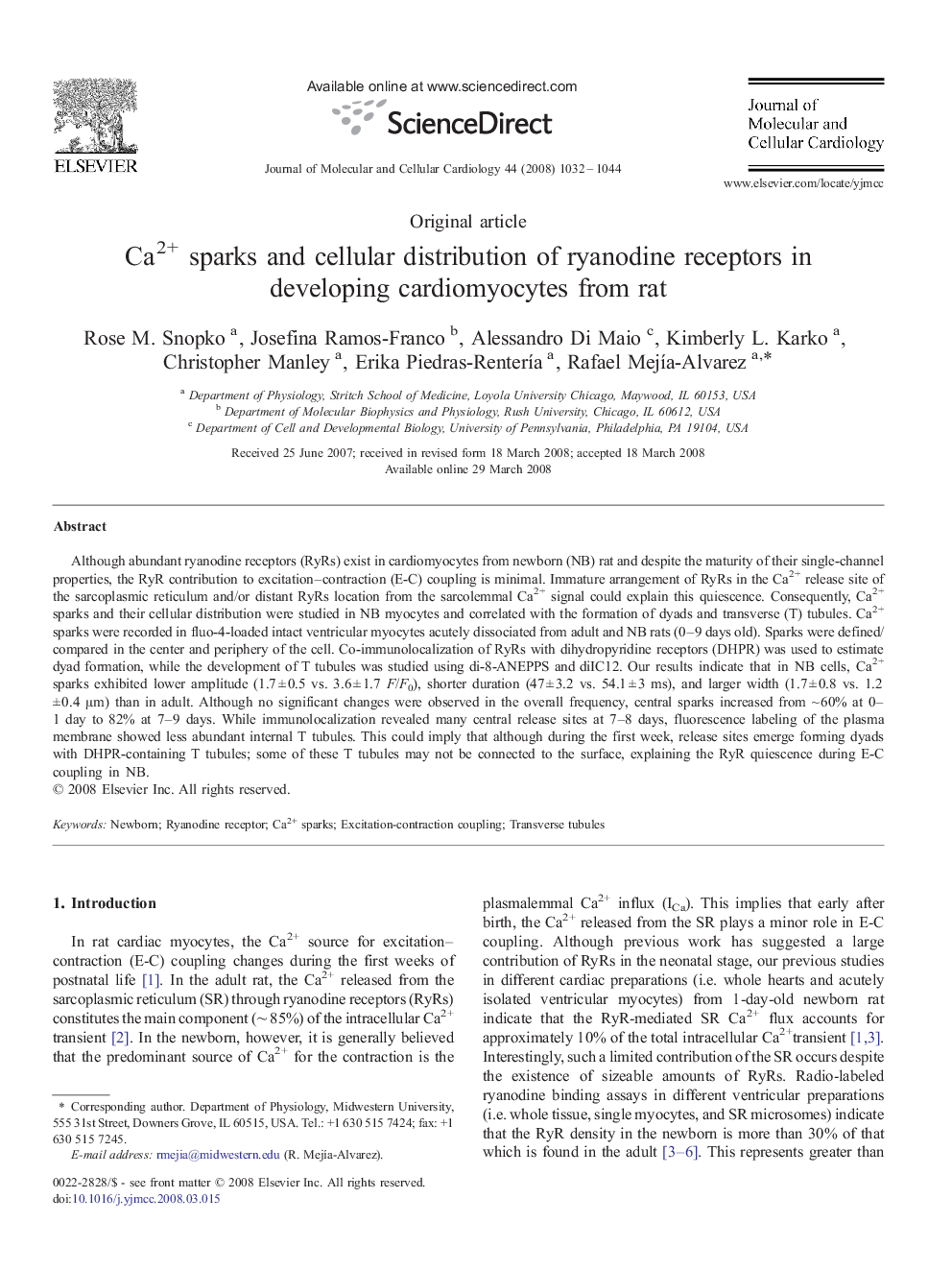| کد مقاله | کد نشریه | سال انتشار | مقاله انگلیسی | نسخه تمام متن |
|---|---|---|---|---|
| 2191882 | 1097874 | 2008 | 13 صفحه PDF | دانلود رایگان |

Although abundant ryanodine receptors (RyRs) exist in cardiomyocytes from newborn (NB) rat and despite the maturity of their single-channel properties, the RyR contribution to excitation–contraction (E-C) coupling is minimal. Immature arrangement of RyRs in the Ca2+ release site of the sarcoplasmic reticulum and/or distant RyRs location from the sarcolemmal Ca2+ signal could explain this quiescence. Consequently, Ca2+ sparks and their cellular distribution were studied in NB myocytes and correlated with the formation of dyads and transverse (T) tubules. Ca2+ sparks were recorded in fluo-4-loaded intact ventricular myocytes acutely dissociated from adult and NB rats (0–9 days old). Sparks were defined/compared in the center and periphery of the cell. Co-immunolocalization of RyRs with dihydropyridine receptors (DHPR) was used to estimate dyad formation, while the development of T tubules was studied using di-8-ANEPPS and diIC12. Our results indicate that in NB cells, Ca2+ sparks exhibited lower amplitude (1.7 ± 0.5 vs. 3.6 ± 1.7 F/F0), shorter duration (47 ± 3.2 vs. 54.1 ± 3 ms), and larger width (1.7 ± 0.8 vs. 1.2 ± 0.4 μm) than in adult. Although no significant changes were observed in the overall frequency, central sparks increased from ~ 60% at 0–1 day to 82% at 7–9 days. While immunolocalization revealed many central release sites at 7–8 days, fluorescence labeling of the plasma membrane showed less abundant internal T tubules. This could imply that although during the first week, release sites emerge forming dyads with DHPR-containing T tubules; some of these T tubules may not be connected to the surface, explaining the RyR quiescence during E-C coupling in NB.
Journal: Journal of Molecular and Cellular Cardiology - Volume 44, Issue 6, June 2008, Pages 1032–1044